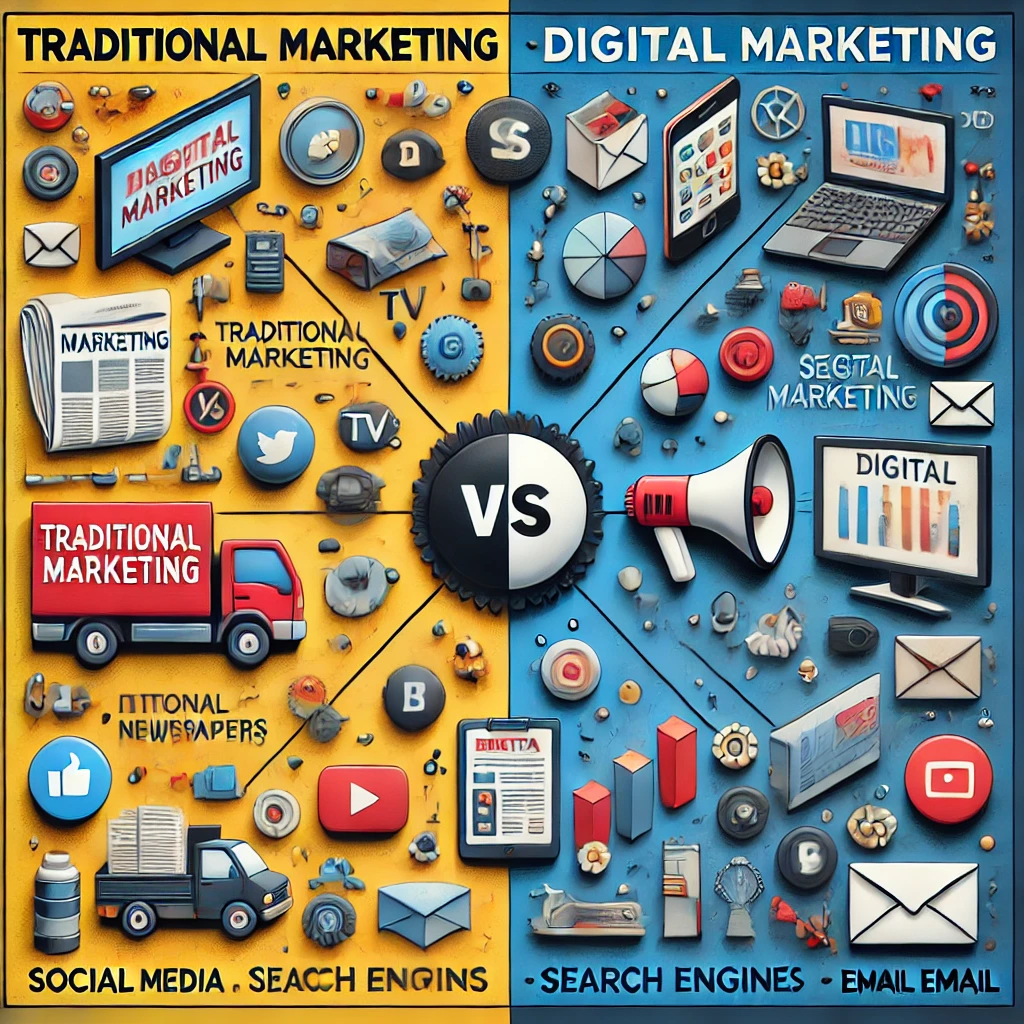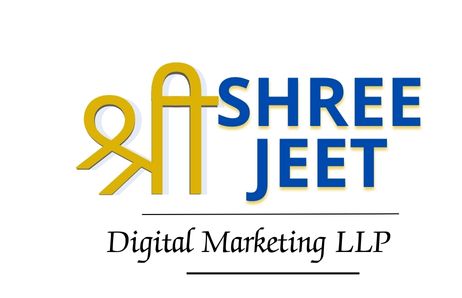Marketing has always been a cornerstone of business success, but the ways we connect with audiences have evolved dramatically over time. Traditional marketing, with its reliance on offline channels like print and broadcast media, once ruled the advertising world. However, the advent of the internet has ushered in a new era—digital marketing—allowing businesses to engage audiences globally with unprecedented precision.
In this blog, we’ll explore the core differences between traditional and digital marketing, examine their strengths and limitations, and help you understand how to use them to give maximum results for your business in today’s fast-changing landscape.
What is Traditional Marketing?
Traditional marketing refers to the conventional methods of promoting products or services that rely on offline channels and physical mediums. It includes techniques like print advertisements, TV and radio commercials, billboards, flyers, and direct mail. Traditional marketing focuses on reaching a broad audience through mass communication and often emphasizes one-way communication, where the brand delivers its message to the consumer without direct feedback or interaction.
What is Digital Marketing?
Digital marketing involves the use of online platforms and digital technologies to promote products or services. It leverages channels like social media, search engines, email, websites, and mobile apps to reach targeted audiences. Unlike traditional marketing, digital marketing allows for two-way communication, enabling real-time engagement, personalized messaging, and detailed performance analytics to optimize campaigns. It’s characterized by its global reach, cost efficiency, and adaptability to rapidly changing trends.

Key Differentiating factors:
- Cost: Comparing budgets for TV ads versus social media campaigns.
- Audience Reach: From local markets to global audiences.
- Measurability: Data-driven analytics versus limited tracking methods.
- Engagement: One-way versus interactive communication.
- Customization: Generalized messaging versus personalized content.
Traditional Marketing Channels
Cost
Traditional marketing generally requires a higher upfront investment for broad-reaching campaigns like TV or print ads
audience Reach
Traditional marketing primarily targets local or regional audiences through physical channels
Measurability
Traditional marketing offers limited ways to measure success, such as sales increases or customer surveys
Engagement
Traditional marketing relies on one-way communication, delivering messages to the audience without feedback
Customization
Traditional marketing uses generalized messaging for broad audiences
Digital Marketing Avenues
Cost
Digital marketing is often more cost-effective with options for precise targeting and scalable budgets.
audience Reach
Digital marketing enables global reach by connecting with audiences online across geographies.
Measurability
Digital marketing provides real-time, detailed analytics like clicks, impressions, and conversions.
Engagement
Digital marketing encourages two-way interaction through comments, likes, and direct messaging
Customization
Digital marketing allows for highly personalized content tailored to individual preferences and behaviors

Strengths of Traditional Marketing
- Tangible Presence: Print materials like brochures, flyers, and billboards offer a physical presence that leaves a lasting impression on consumers.
- Broad Audience Reach: Traditional marketing channels like TV and radio can reach a wide, diverse audience simultaneously.
- Familiarity: Many consumers, especially older demographics, are more comfortable and familiar with traditional media formats.
Strengths of Digital Marketing
- Global Reach: Digital marketing enables businesses to connect with audiences worldwide, breaking geographical barriers.
- Cost-Effectiveness: Online advertising platforms like social media and PPC allow campaigns to be run on flexible budgets, making them accessible to businesses of all sizes.
- Precise Targeting: Advanced targeting options based on demographics, interests, and online behaviors ensure messages reach the right audience.
Which Approach Is Right for Your Business?
Growth-driven marketing seamlessly integrates traditional and digital strategies to create a holistic approach for achieving business objectives. By blending the tangible impact of traditional marketing methods like print ads, TV commercials, and direct mail with the precision and scalability of digital marketing, businesses can engage audiences across multiple channels effectively.
Traditional techniques build credibility and foster strong brand recognition among local and older demographics, while digital methods, such as social media, SEO, and email campaigns, drive personalized engagement and measurable outcomes. This combination ensures broader reach and deeper connections with diverse audience segments.
While traditional marketing laid the foundation for modern advertising, digital marketing has revolutionized how businesses connect with their audiences. Each approach has unique strengths and is best suited to specific goals and audiences. By understanding the differences and integrating the right mix of both strategies, businesses can create a powerful marketing plan that drives success in today’s competitive landscape.
Whether you’re crafting a billboard or launching a social media campaign, the key is knowing your audience and delivering value through the most effective channels.
